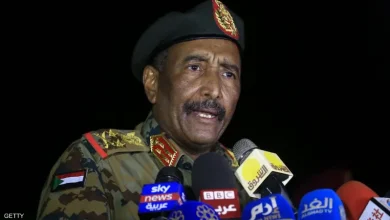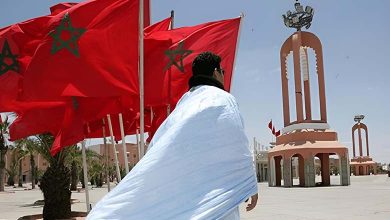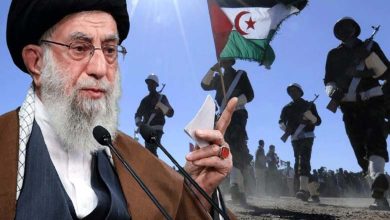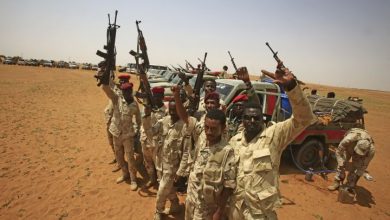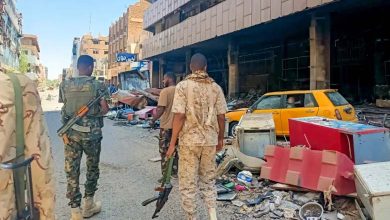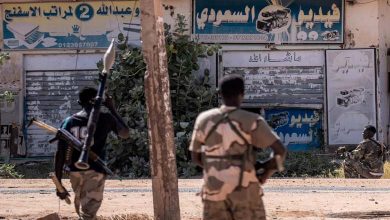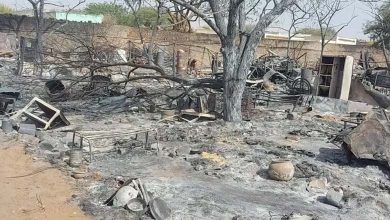“Dawn Forces”: A Military Arm of the Muslim Brotherhood
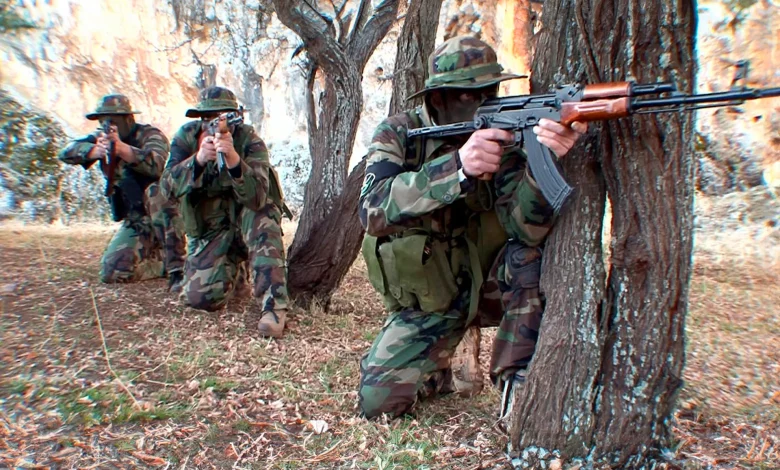
Dawn Forces, the Lebanese branch of the “Muslim Brotherhood,” is not only on the front lines of skirmishes along the Lebanese border with Israel but also has its own military wing. The surprise also extended to the organizational body of the group itself, as the majority of its leadership were unaware of what was happening, and read the statement like others. This had repercussions within the corridors of the group itself.
So who are the “Dawn Forces”? Who leads them? How did they become involved in the skirmishes? Did they indeed carry out operations on the southern border, or did another group undertake them and the “Islamic Group” claimed responsibility?
The first appearance of the “Dawn Forces” dates back to 1982 when the Israeli army invaded Lebanon, reaching Beirut. At that time, organizations with different ideological backgrounds, including the “Dawn Forces,” conducted military operations against the Israeli occupation. This was before the emergence of “Hezbollah,” which gradually monopolized “resistance” efforts. The “National Accord Document” in 1989, which ended the civil war, stipulated the handover of militia weapons to the Lebanese state, causing all factions and military arms of parties to retreat into the shadows except “Hezbollah.”
The name “Dawn Forces” has rarely been mentioned since then. However, it remained within the organizational structure of the group and had its own budget.
When Azzam Al-Ayyoubi was elected Secretary-General of the “Islamic Group” in 2016, representing the reformist trend seeking relative moderation from the ideological legacy of the “Muslim Brotherhood” and openness to local and Arab political forces, the name of the group’s military arm began to circulate again. Al-Ayyoubi decided to dismiss the commander of the “Dawn Forces,” Khaled Badee, and other military leaders after discovering financial and organizational flaws within the apparatus, as well as their refusal to provide any official documents about the members, estimated at around a thousand, and insistence on receiving a share of the budget without providing any explanatory data. Al-Ayyoubi appointed Talal Al-Hajjar from the Chouf region south of Beirut as the new commander of the apparatus.
However, all those dismissed refused to implement the decision and insisted on continuing in their positions, even if it led to splits within the group, prompting the new Secretary-General to retract his decision. Consequently, the group’s military arm split into two, especially since regional tribalism plays a significant role in the internal structure of parties and organizations in Lebanon.
There was another split within the leadership ranks of the group between two political lines: one loyal to Turkey and Qatar and the other seeking an alliance with “Hezbollah” and the “Axis of Resistance.” The first line was led by Azzam Al-Ayyoubi and other figures like the current and only deputy of the group, Imad Al-Hout. The second line bore the imprint of Hamas movement, with the majority of its faces being from the security or military leadership.
It is worth mentioning that the group has a security apparatus other than the “Dawn Forces,” whose mission is to coordinate with Lebanese military and security agencies, as part of Lebanese political customs, which require coordination between any party or organization and security agencies, given the intertwining of political and security work, especially in Islamic circumstances. It is known that Lebanon has witnessed significant activity by some extremist Islamic movements, which recruited youths to fight in Syria and Iraq.
In parallel with the rise of new leaders in “Hamas” such as Gaza’s movement leader Yahya Sinwar and Deputy Head of the Political Bureau Saleh al-Arouri after the former head of the movement abroad, Khaled Mashal, was excluded from the decision-making process, a similar struggle was taking place within the “Islamic Group” in Lebanon. Hamas has a significant influence within the organizational structure of the group, with dozens of its organized members receiving financial allocations from it, given its financial flexibility and capabilities, which enable it to accommodate dozens within a network of its charitable and humanitarian organizations.
-
Leadership du Hamas seeks to disavow and hold Sinwar accountable to facilitate a ceasefire agreement
On the other hand, Hezbollah supported this conflict and fueled it to strengthen the group’s alliance with Hamas, especially after the internal elections of the movement in August 2021 resulted in the consolidation of the team supporting the alliance with the “Axis of Resistance,” especially Saleh al-Arouri, who resides in Lebanon and oversaw the internal elections of the “Islamic Group” in coordination with Hezbollah.
Expanding Hamas‘ Reach
Indeed, Al-Arouri succeeded in establishing a Consultative Council and a Political Bureau for the group that revolve within the sphere of “Hamas” and support its choices. Sheikh Mohammed Taqoush was elected Secretary-General of the group in August 2022, on the basis that he is a neutral and non-sectarian figure. However, sources within the group speak of his support for “Hamas” choices, to the extent that he receives financial allocations from them.
Not only that, but high-level leadership sources in the group revealed “Hamas” intervention in the conflict within the “Forces of the Dawn,” through support for a third group led by Omar Al-Kaaki from Beirut, with members from the city, as well as from Sunni-populated villages and towns on the border, where “The Islamic Group” has a prominent presence in all service, educational, and health sectors. This group receives direct funding from “Hamas” through Saleh Al-Arouri and operates under his orders, with no indication from the group. According to information from security sources, as well as from within the group and those close to Hezbollah, this group has received and continues to receive intensive military training from the latter.
The recent internal elections of “The Islamic Group” marked a major turning point in its political approach, as it gradually approached “Hezbollah,” with intensified coordination meetings between the two parties, both secretly and publicly.
Despite having only one deputy in parliament, “The Islamic Group” is one of the oldest Sunni political organizations, with a presence in all Sunni-populated areas. Its former Secretary-General, Azzam Al-Ayyoubi, was close to winning a second parliamentary seat in the city of Tripoli, the largest Sunni city in Lebanon. Additionally, the group played a role in supporting candidates in other areas.
With Hezbollah seeking moral reconciliation with Sunnis in recent years, after its military intervention in the Syrian war created animosity among them, it sought to co-opt “The Islamic Group” to help achieve its goal, exploiting the Sunni political fragility in recent times, and the absence of leadership capable of attracting the public. This is in addition to using the group as a Sunni facade when necessary, in line with the slogan “Unity of the Arenas.” This necessity became apparent after the “Operation Flood of Al-Aqsa,” when Hezbollah, which completely controls the border area with Israel, allowed Hamas and Islamic Jihad to carry out infiltration operations into the other side of the border and launch rockets towards Israel.
However, the overt presence of the Al-Qassam Brigades, the military wing of Hamas, and the Al-Quds Brigades, the military wing of Islamic Jihad, on Lebanese soil had a negative impact on the political scene, especially on Christian parties, who recalled the “Cairo Agreement” signed between the Palestine Liberation Organization and the Lebanese state in 1969, which resulted in the spread of armed Palestinians in the south and other areas, and was one of the reasons for the outbreak of the civil war.
Therefore, Al-Arouri relied on his group within the “Forces of the Dawn” to carry out operations on the border with Israel, with Hezbollah‘s approval, which wanted to present a Sunni Lebanese face to the “resistance.” He provided protection to this group to prevent the army from arresting its militants, as happened before. According to sources within the group, in August of last year, Lebanese military intelligence arrested three members belonging to the “Forces of the Dawn” while they were preparing platforms to launch rockets towards Israeli settlements. Although “The Islamic Group” tried to keep the issue under wraps at the time, it was leaked to the media, causing it significant embarrassment. It issued an official statement criticizing the media controversy without denying the incident.
According to the same sources, the three operations announced by the “Forces of the Dawn” were actually carried out by the Al-Qassam Brigades, in collaboration with the Al-Arouri group within the group. The sources support their account by pointing out the lack of publication of any pictures or videos of these operations, as Hamas or Hezbollah usually do. When some leaders of the group asked its Secretary-General, Mohammed Taqoush, for photos or videos to present to the public, he responded that the time was not right. Taqoush was almost the only leader aware of what “Forces of the Dawn” were doing or what would be attributed to them.
As statements about the rocket launches by the “Forces of the Dawn” continued to be issued, heated discussions took place within the organizational corridors of the group, especially since a decision of this kind requires approval from the General Office and a binding vote from the Consultative Council, which did not happen.
Therefore, what happened was considered an internal violation of calculations related to the current leadership’s relationship with the “Axis of Resistance.” The sources clarified that the opposing opinion within the group believes that launching rockets does not change anything in the political and military equation, and that readiness should have been maintained in case of a ground invasion of Lebanese territories. For “The Islamic Group” to appear as a Sunni cover for Hezbollah would have negative repercussions on the Sunni stance in general, and would make the group vulnerable to criticism internally and externally.
Regional Discomfort?
Indeed, according to sources, regional actors have expressed concern over the emergence of the “Dawn Forces” in the field, leading to the cessation of their operations and their reduction to just three. Additionally, the local support for the Al-Qassam Brigades proved futile but led to a negative reaction within Sunni circles, as the Hezbollah allowed the creation of a Sunni militia that it would later use to impose political realities on its opponents.
The statements made by Taqoush and the head of the group’s political bureau, Ali Abu Yassin, regarding the declaration of a general mobilization, akin to a declaration of jihad, and the opening of volunteering in the “Dawn Forces,” have further complicated matters.
According to information, behind-the-scenes talks are taking place between current and former Sunni deputies and ministers to adopt a unified position to reject the militia path being prepared by involving Sunnis in arming and violence.
The deputy of the “Islamic Group,” Imad al-Hout, is one of the most vehement opponents of what is happening, as well as Azzam al-Ayyoubi and other prominent leaders. However, they all strive to keep the differences within the internal corridors of the group, although the tension is evident in al-Hout’s recent media appearances.
The recent events have shown the extent of Hamas‘ influence within the “Islamic Group” in Lebanon. What should be the group’s intended role after the war, and what are its limits? This is a question that is now being raised within Sunni circles in Lebanon.



